Trying To Follow My Intuition
I am an intuitive person. That might sound unexpected coming from someone with a strong background in physics and engineering—but to me, it's not a contradiction. I believe the mind is a sponge for information. We constantly absorb ideas, patterns, impressions, even when we’re not consciously aware of it. If you listen carefully, your subconscious holds an enormous amount of insight. Intuition, in my view, is simply the act of listening to that internal undercurrent.
The downside? The messages are rarely clear. Following your intuition doesn’t always lead somewhere useful. It might feel logical in the moment—one step flows into the next—but suddenly you’re at a dead end, or somewhere that doesn’t make sense. You loop back, question the path, wonder if you misread the signals. But still, you keep moving. Because that’s how intuition works: it doesn’t show you the whole map. Just the next arrow.

This collection is built on that principle. Each work is a kind of constructed confusion: a pseudo-logical space that obeys its own internal rules. You’ll see blocks, stairs, structures that seem to make sense at first glance. Pointers that indicate direction. But look longer and the illusion starts to fall apart. The perspectives shift. The arrows go nowhere. The logic collapses in on itself.
I generate these pieces digitally, using javascript to draw isometric projection and rule-based systems, but the code is made to allow inconsistencies, contradictions, and visual dead ends to emerge. What starts as structure becomes a kind of spatial poem—open to interpretation, resistant to resolution.

After the digital image has been created, I engrave the image into birch plywood using my (home-built) laser cutter. This produces a tactile surface: a woodblock where the darkest parts of the image remain raised, and lighter areas are recessed.
The wood relief is treated with oil and carefully sanded. The oil helps prevent the wood from absorbing ink unevenly, and the sanding improves the definition of the relief and softens burnt edges left by the laser. Once prepped, the block is inked by hand using a roller, applying ink only to the raised surface.
Finally, I place the inked woodblock face-up in the press. A sheet of paper is laid on top, and the whole assembly is rolled through the press, transferring the image with firm, even pressure. Every print in the series is made this way—slowly, manually, and with small variations in inking, pressure, or paper texture.
The wood relief is delicate, and over time it begins to show signs of wear. With each print, the surface may gather small imperfections—tiny scratches, worn areas, or missing fragments. Rather than distracting from the image, these artifacts become part of its character. They make the printed structures feel aged, weathered, like something that has endured. The print no longer suggests a perfect system, but something lived-in, vulnerable, and quietly breaking down.
The result is that no two prints are exactly the same. Each carries its own subtle differences—its own evidence of the process. A bit like thought patterns themselves: similar in structure, but always shifting in the details.
This series is about the quiet tension between instinct and understanding. About trusting a direction, even when the destination is unclear.
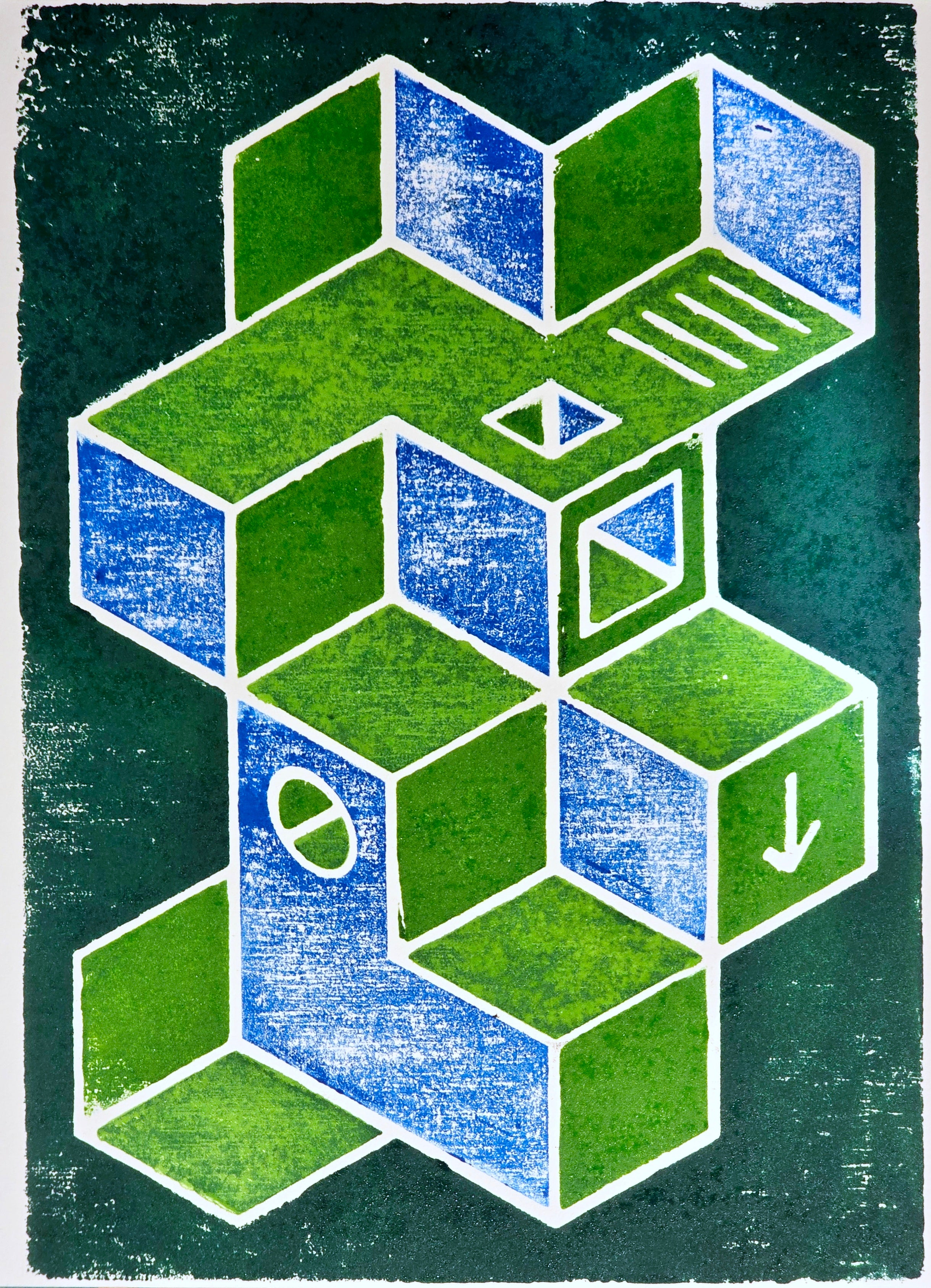
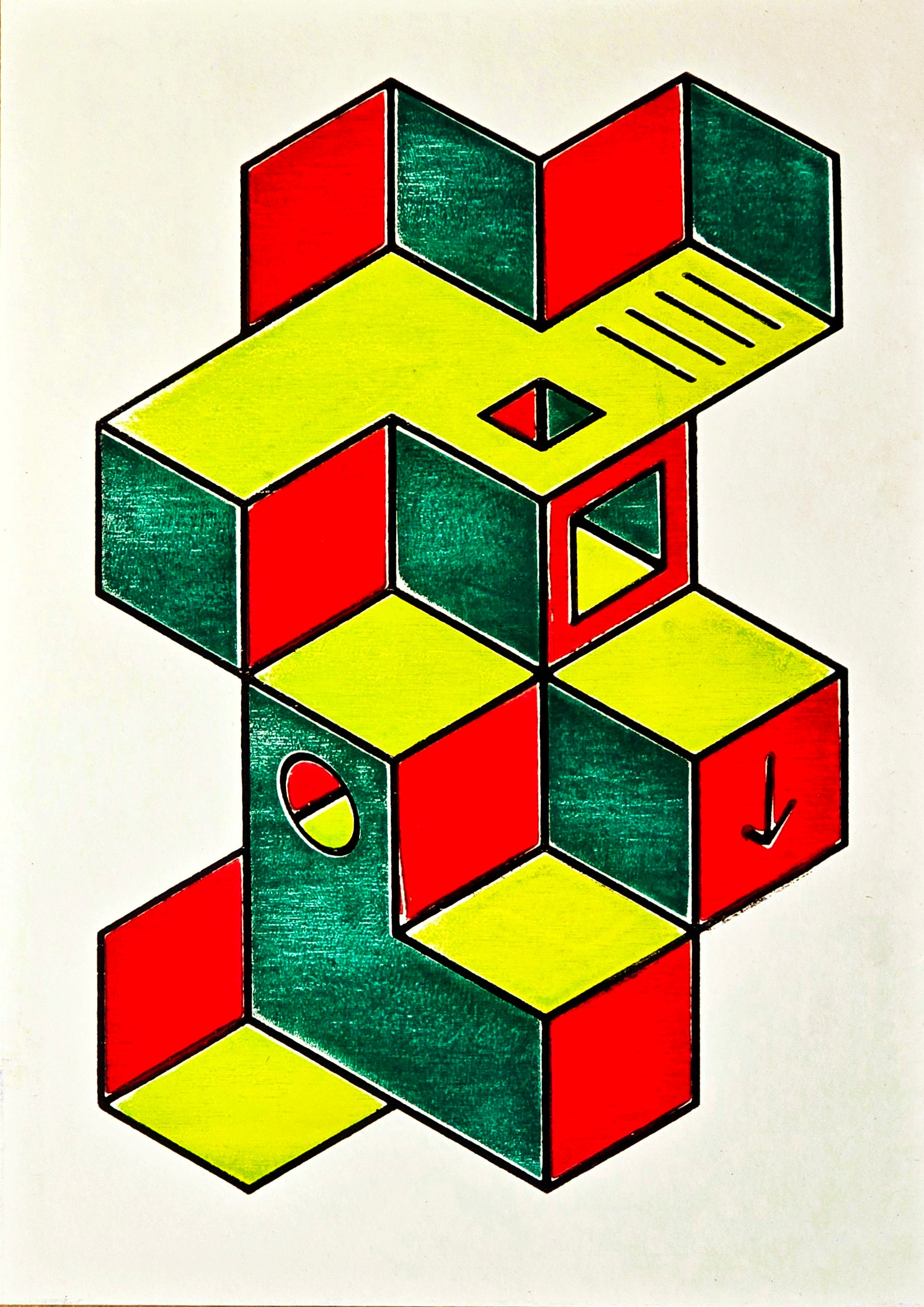
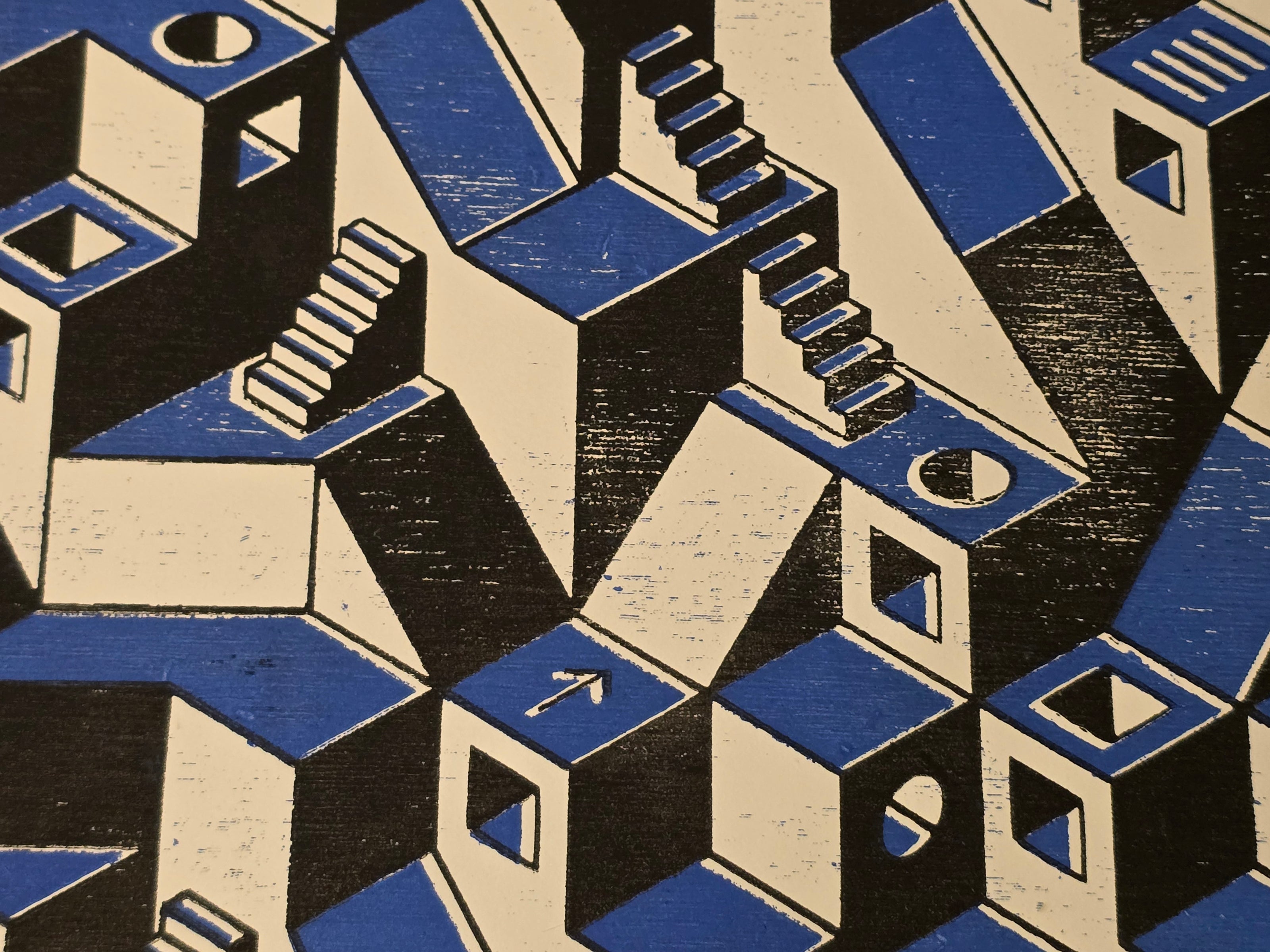
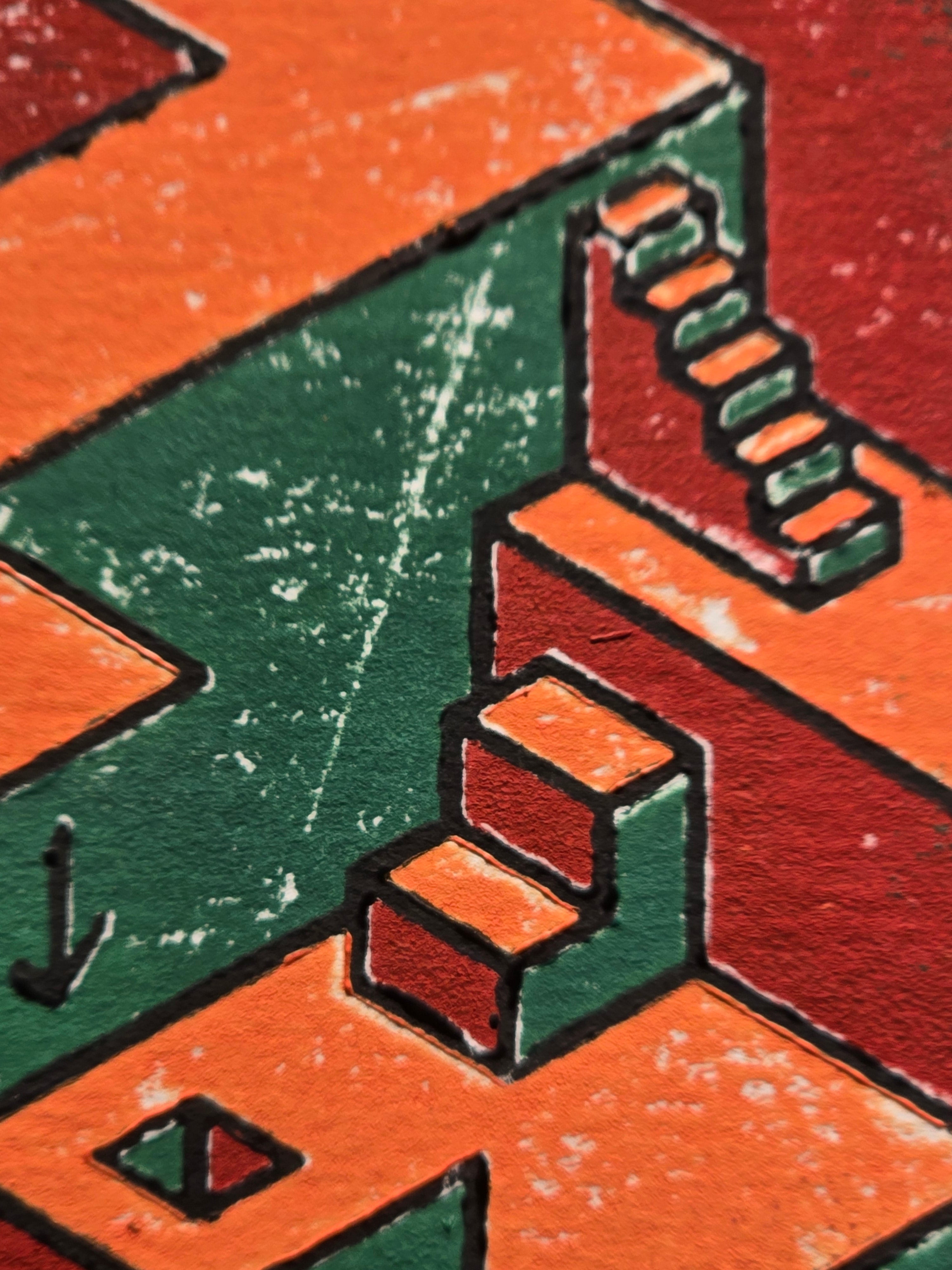
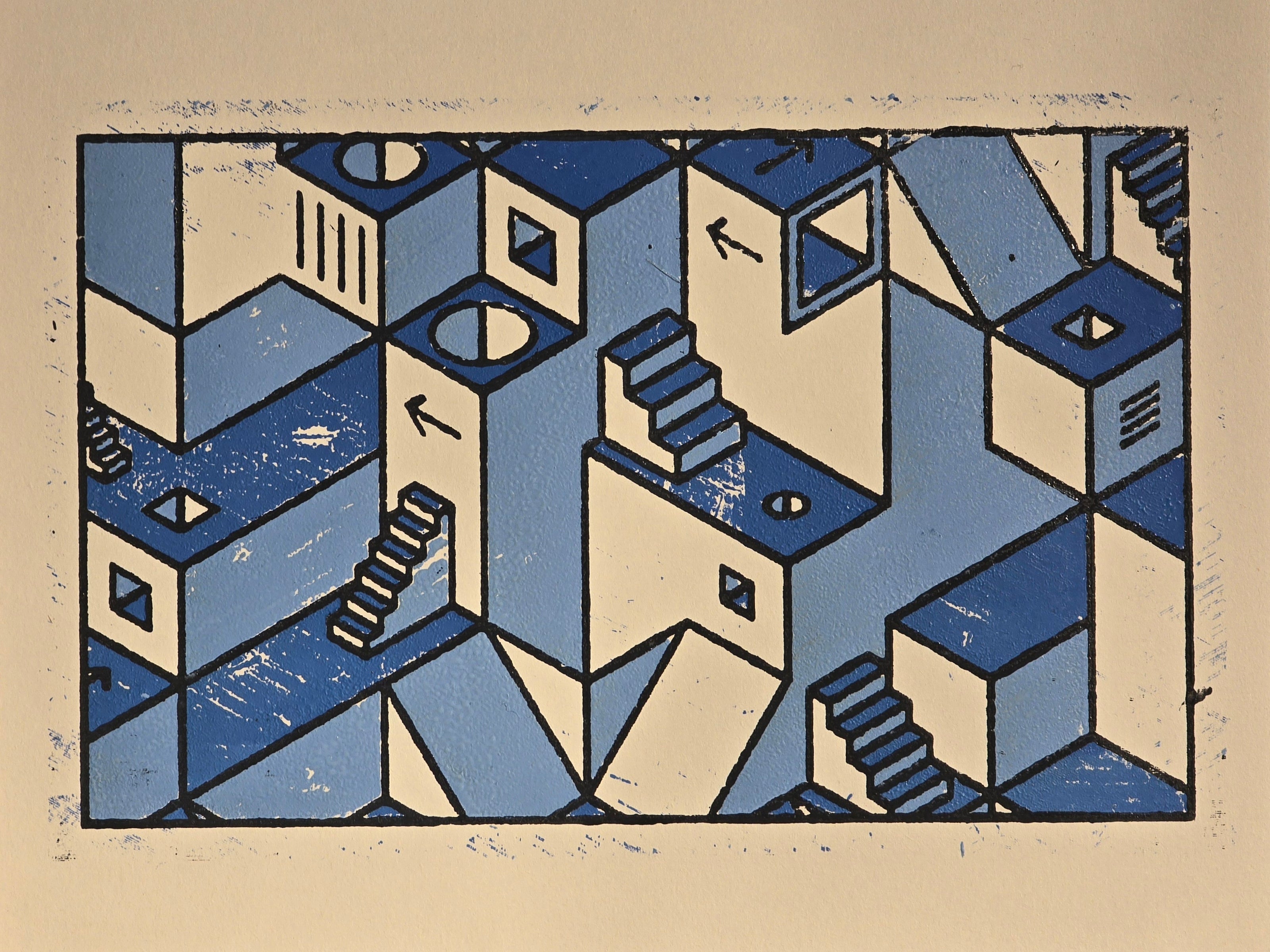
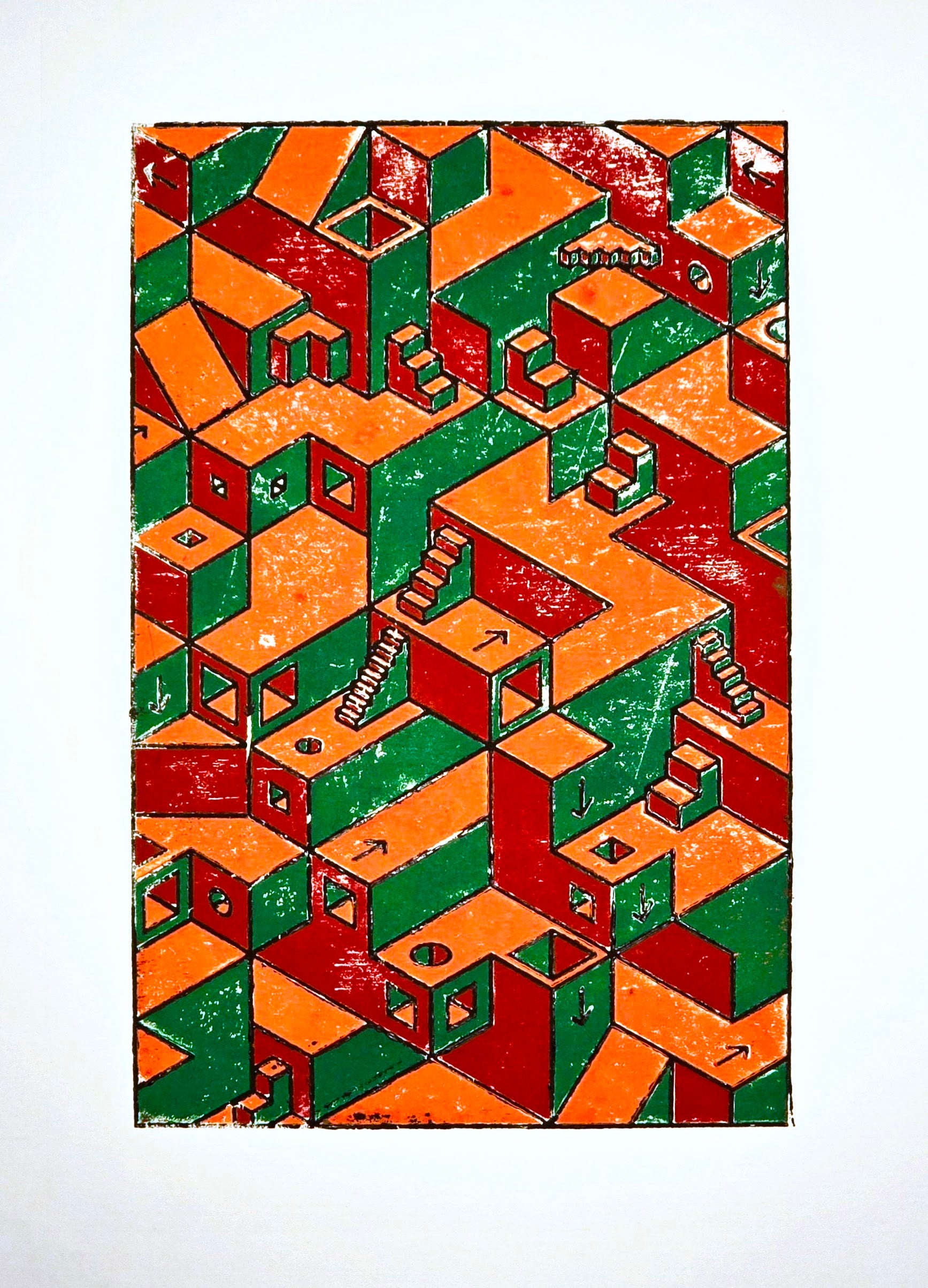
Available Works
-
FMI02 50x70cm, Yves Klein Blue
Regular price €150,00Regular priceUnit price per -
FMI01 5/5 35x50cm
Regular price €150,00Regular priceUnit price per -
FMI01 4/5 35x50cm
Regular price €150,00Regular priceUnit price per -
FMI01 3/5 35x50cm
Regular price €150,00Regular priceUnit price per -
FMI01 2/5 35x50cm
Regular price €150,00Regular priceUnit price per -
FMI01 1/5 35x50cm
Regular price €150,00Regular priceUnit price per






